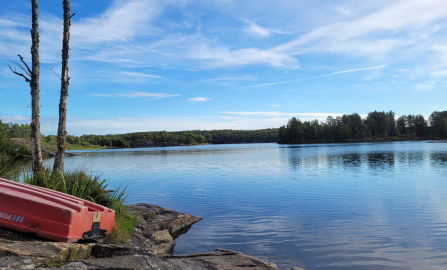Lake Vansjø, Norway
Successful restoration of a lake affected by nutrients from agriculture and sewage.
Site description
Lake Vansjø in south-eastern Norway is a large, lowland lake system (36.9 km2) consisting of several sub-basins. The two main basins consist of a deeper eastern basin (8.7 m mean depth) that flows into a shallower western basin (3.8 m mean depth) that then drains into the nearby Oslo fjord. Vansjø lies in a catchment dominated by forestry (78%) and agriculture (15%), the latter mainly cereal production (89%). The eastern basin is used as a drinking water source for about 60,000 people, and both basins are used extensively for fishing, bathing and other recreational activities. Since the 1970s, Vansjø has experienced blooms of cyanobacteria that have led to beach closures and restricted water use. A long-term programme of restoration has aimed to reduce nutrient loading to the lake to ensure more sustainable water use.
Restoration measures applied
Narrative including measures applied and success or failure to improve.
Management measures taken to limit the inputs of nutrients have focused on introducing environmentally-friendly farming practices (reduced fertiliser applications, establishment of buffer strips, wetland creation) and installation and upgrading of sewage systems across the catchment. This has resulted in success in reducing the frequency and magnitude of harmful algal blooms of cyanobacteria, but the lake remains in moderate ecological status.
Current goals of restoration at the site
To reduce nutrients further and achieve the WFD target of Good Ecological Status in the lake and support the ecological recovery of downstream Oslo fjord. Ultimately management measures aim to restore water quality in the lake to ensure sustainable water use for water supply and recreation.
Sectors and stakeholders involved in lake basin management
Stakeholders include agriculture, water supply and sanitation, and forestry (timber) sectors. There are also many visitors for recreation (fishing, boating, bathing).
Further reading
Barton et al., 2010. Assessing Economic Benefits of Good Ecological Status in Lakes under the EU Water Framework Directive. EUFP6 AQUAMONEY Project Report to the European Commission. NIVA report 5732-2009.
Haande S., Moe S. J. & Couture R. M., 2016. Phytoplankton and other monitoring data from Lake Vansjø. Freshwater Metadata Journal 15: 1-8. https://doi.org/10.15504/fmj.2016.15
Moe et al., 2016. Climate change, cyanobacteria blooms and ecological status of lakes: A Bayesian network approach. Ecological Modelling, 337, 330-347.
Skarbøvik and Bechmann, 2010. Some Characteristics of the Vansjø-Hobøl (Morsa) Catchment. Bioforsk Report 5, 128.
